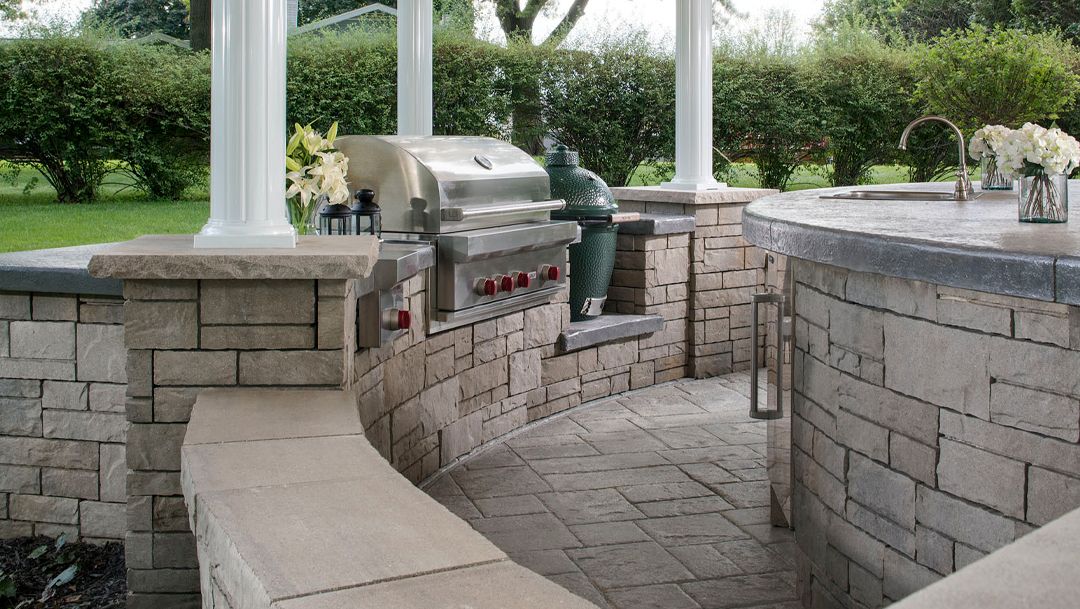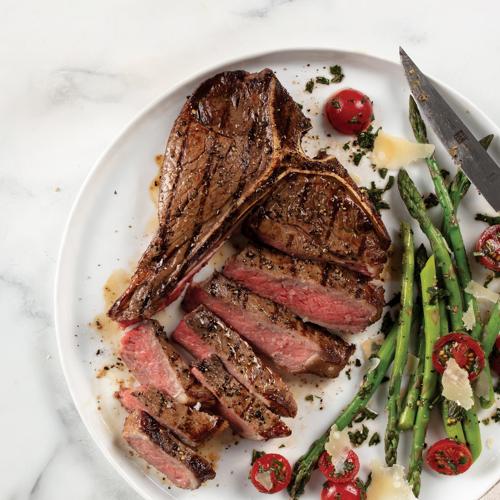Guest Post by Belgard
An outdoor kitchen is not only a place to grill, it becomes the hub for family time and entertaining. Whether a simple grilling area or a gourmet haven, a built-in outdoor kitchen or grill island can improve the value and look of your home. But as with any home improvement project, it can also be a significant investment. Before embarking on an outdoor cooking upgrade, consider some do’s and don’ts that will help with the planning process.
Yes, please.
- Consider your cooking style. Are you all about the “experience” of cooking, do you typically need to prepare meals quickly, or do you have the slow-cooking set-it-and-forget-it mentality? Your answer to this question will determine what type of grill is best for you. If you fall into more than one category, consider designing a kitchen with more than one cooking surface.
- Thoroughly research grills and appliances. Drop-in grills and outdoor-rated appliances are expensive to replace. Sometimes it is better to spend a little extra on the front end to get something that will last longer and perform better. However, the most expensive is not always the highest-rated.
- Think long term. Pick materials that are durable and not overly trendy. Also consider any future improvements you might want to make later and preplan accordingly. Have your contractor pre-pour future footings, as well as run and cap off needed plumbing or electrical lines. This will save a significant amount of money down the road.
- Get multiple quotes. This is particularly important for a large project. Don’t always go with the lowest bid. Check references and look at work samples. Pick the contractor that you trust will be the best person to bring your vision to life.
- Ask about financing. Many contractors have access to flexible financing programs (including same-as-cash options) that can cover hardscapes, installation costs, furniture, appliances and more. This can allow you to build your dream space now instead of phasing construction out over time.
Oh no, you didn’t!
- Where are the outlets? Just like in an indoor kitchen, there’s almost no such thing as too many electrical outlets. You may also want to consider including USB outlets for charging devices. Another good idea is to include outlets on the porch ceiling or columns for string lights.
- Keep the heat on the grill. The best way to get year-round use from your outdoor kitchen is to pay attention to year-round sun and weather patterns and plan the space accordingly, ensuring you and your guests stay comfortable no matter the season. Ventilation is also important.
- Don’t over-cramp the space. If possible, include adequate countertop prep and serving space. But you also need to make sure there’s enough room for walking and sitting. For a large project, ask your contractor to provide a design rendering, which can help you make changes during the design phase instead of during construction. Mid-construction revisions can be costly.
- So much for cleanliness. If you have the space, a full-sized sink will come in handy. A smaller bar-style sink will at least allow you to wash a glass or your hands. At the VERY least, a spigot should be nearby. Remember, there will be fire.
For more tips on outdoor living design, visit the Outdoor Living by Belgard blog. To find a qualified hardscape contractor, visit Belgard.com/locator.

Steaks for Everyone
Shop steaks by cut, texture, flavor — whatever you prefer! We’ve got something for everyone.

